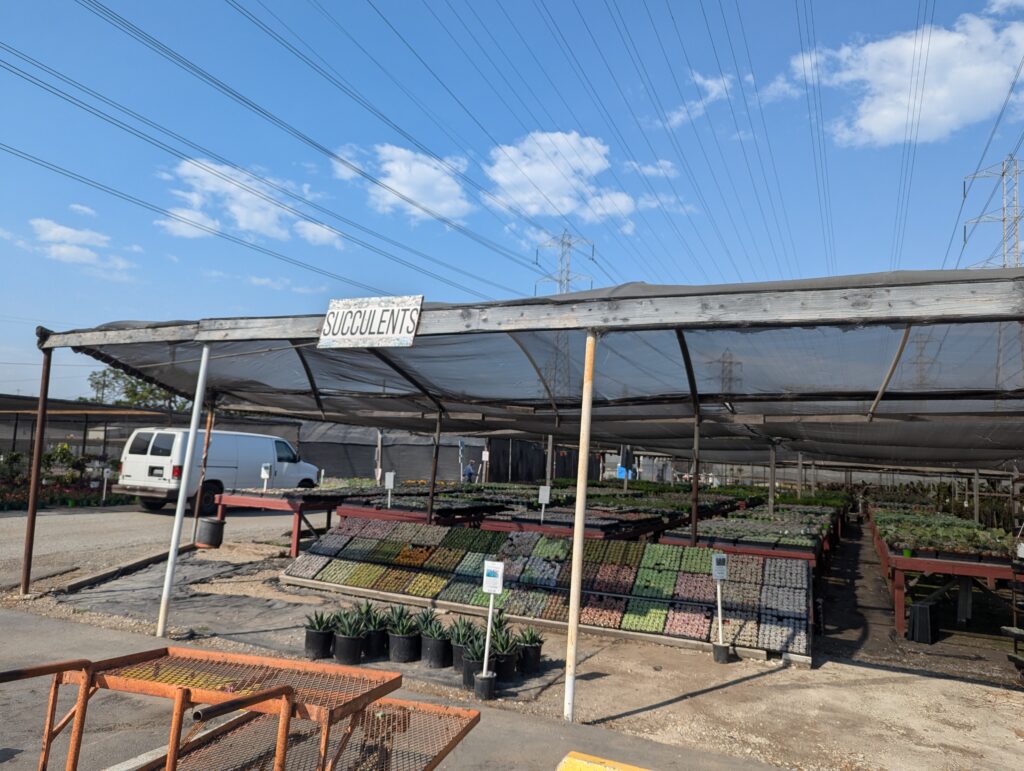Toro Nursery is a well-established nursery located in Torrance, California. Serving the community for many years, Toro Nursery has earned a reputation for its wide selection of high-quality plants, gardening tools, and landscaping products. The nursery is wholesale but is open to the public.
My Mother and I visited the nursery on a Sunday morning during the 2024 September heat wave we had in Los Angeles. Despite the heat, everything was green and lush. The staff had just finished the morning watering, and the grounds were wet.
I must admit that this is the first time I’ve visited a nursery this large. I usually get my garden supplies from Home Depot or Lowes, with occasional visits to small local nurseries.
We were on the hunt for herbs and vegetables, but they offer everything imaginable. You can find ground covers, succulents, flowers, trees, fruit and vegetables. My mother was pleasantly surprised to find one of her favorite vegetables, Bok Choy. I picked up some Romaine Lettuce, Basil, Marjoram, and Oregano. My bill came to $8.50. For what I purchased, I would have paid three times more if I had purchased the same plants from Home Depot.

The nursery covers a pretty sizable area, I’m guessing a couple of acres, providing ample space for a diverse range of plants, including indoor and outdoor plants, succulents, shrubs, fruit trees, flowers, and seasonal plants. You can walk it but driving to your plant section area is recommended. The nursery is on a gravel road in a huge loop. At the end of the loop, at the exit, is the cashier.

The center offers various types of products catering to both novice gardeners and experienced landscapers. These include a large selection of pots, fertilizers, soil mixes, decorative garden accents, and garden care supplies like mulch and pest control solutions. They also provide irrigation equipment and other landscaping tools for larger garden projects.
While pricing may vary depending on the type and size of plants or materials, Toro Nursery is known for its competitive prices on many products. Common plants and succulents typically range from $5 to $30, while larger trees and specialty items may cost more. Fertilizers, soils, and gardening tools are also reasonably priced, often reflecting the quality and range of products.
In addition to the plant and garden care products, Toro Nursery is known for its knowledgeable staff, who are available to assist customers with expert advice on plant care, landscape design, and gardening tips.
The Nursery is located at 17585 S. Crenshaw Blvd., Torrance, CA 90504. Toro Nursery is open 7 days a week. They also have a location at 3007 Main Street, Anaheim, CA 92614.
You can visit their website at https://toronursery.com/
Have you ever visited Toro Nursery? If so, please share your experience in the comments below.